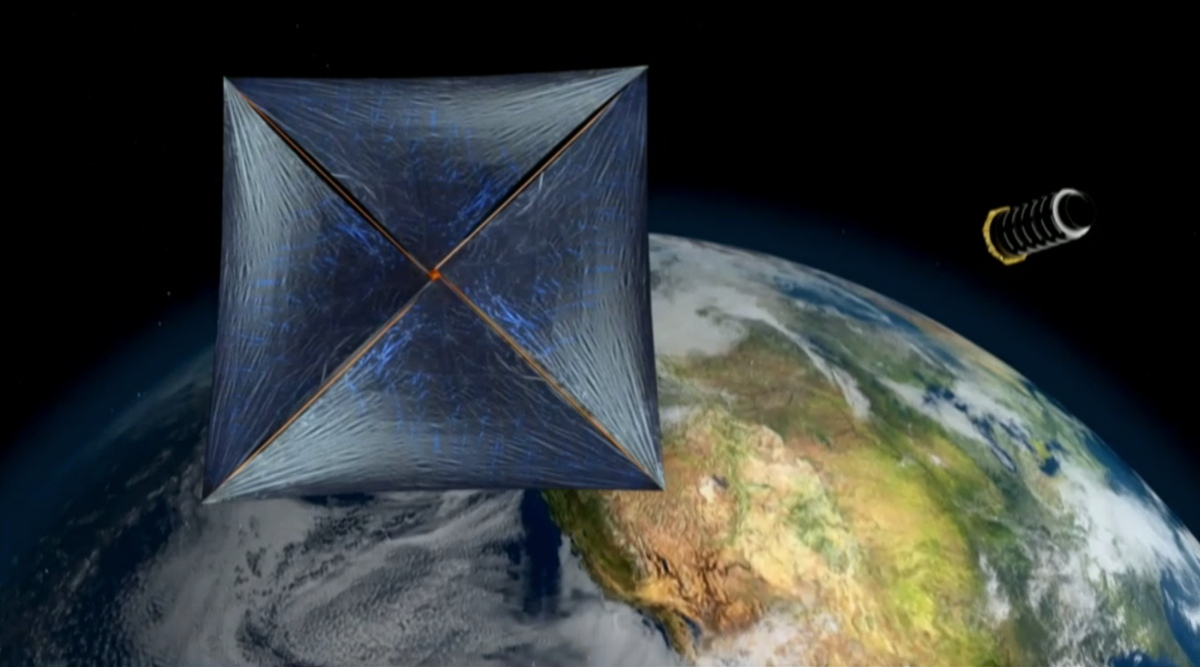Our closest star system, Alpha Centauri, will be the target of a probe that will be launched by an international scientific project called Breakthrough Starshot. The probe will take just 20 years to get there.
According to a press release from the Australian National University, Breakthrough Starshot has plans to develop and test a new type of spaceship propulsion system that employs a light sail and a laser beam array to reach the extremely high speeds required for interstellar travel within our lifetimes (ANU).

Breakthrough Starshot’s ultra-lightweight spacecraft will need to travel four light-years to get to Alpha Centauri. In other words, the distance to our closest nearby star system is 40,208,000,000,000 miles.
The ion thruster, which propels N.A.S.A’s DART mission to an asteroid at 15,000 mph (24,000 km/h), is currently the quickest and most dependable long-distance space travel technology. However, according to N.A.S.A, it would take 18,000 years, or roughly 2,700 generations of humans, to get to Alpha Centauri using an ion thruster.
However, according to N.A.S.A, it would take 18,000 years, or roughly 2,700 generations of humans, to get to Alpha Centauri using an ion thruster.
The Breakthrough Starshot team says their spacecraft can fly to Alpha Centauri in under 20 years with the aid of Earth-based lasers. Assuming the probe spacecraft makes it to its goal, it will return the first photographs from another solar system, providing a rare glimpse of faraway worlds similar to Earth.
In a recent scientific study that sought to make travel to Alpha Centauri feasible, the ANU researchers presented their suggestion. The group is creating a little probe with a lightsail powered by a laser array on Earth. Millions of laser beams will be focused on the sail by an interstellar laser array, enabling it to fly at incredible speeds.

According to Dr. Bandutunga of the Applied Metrology Laboratories of the ANU Centre for Gravitational Astrophysics, we need to think outside the box in order to travel between Alpha Centauri and our own solar system.
“The sail will travel for 20 years before arriving at its destination after setting out. It will capture photographs and take measurements as it flies by Alpha Centauri, then transmit those data back to Earth.”
Breakthrough Starshot and the ANU team rely on the evolution of many important technologies to create their spacecraft. Lightsails, for example, have just lately been demonstrated to be a feasible mode of space travel. LightSail 2, a Carl Sagan-inspired spacecraft, successfully lifted its orbital trajectory around Earth by 3.2 kilometers in 2019 using a lightsail, or solarsail, driven by photons from the Sun.

The key obstacle will be the ANU team’s cutting-edge laser array plan, which would require millions of lasers to synch. “The Breakthrough Starshot program estimates the total required optical power to be about 100 GW — about 100 times the capacity of the world’s largest battery today,” Dr. Ward, from the ANU Research School of Physics, says. “To achieve this, we estimate the number of lasers required to be approximately 100 million.”
The ANU team suggests employing a ‘guide laser’ satellite in Earth’s orbit to maintain their lasers aiming exactly at the lightsail during the voyage. With an algorithm to pre-correct the array’s light, this will accommodate for the atmospheric distortion that the other Earth-bound lasers would endure.

According to Dr. Bandutunga, “the next step is to start testing some of the basic building blocks in a controlled laboratory setting. This includes the concepts for combining small arrays to make larger arrays and the atmospheric correction algorithms.”
As well as being part of a worldwide partnership, the ANU team is only focusing on one aspect of the big project.

Breakthrough Starshot is one of Yuri Milner’s Breakthrough Initiatives, a set of scientific and technological efforts aimed at finding life outside our solar system. If the lightsail prototype is successful, it might reach the planets around our closest star, Alpha Centauri, during our lifetime. The project’s success would thereby raise humans to the status of interstellar species.
Soucre; news.sci-nature.com








